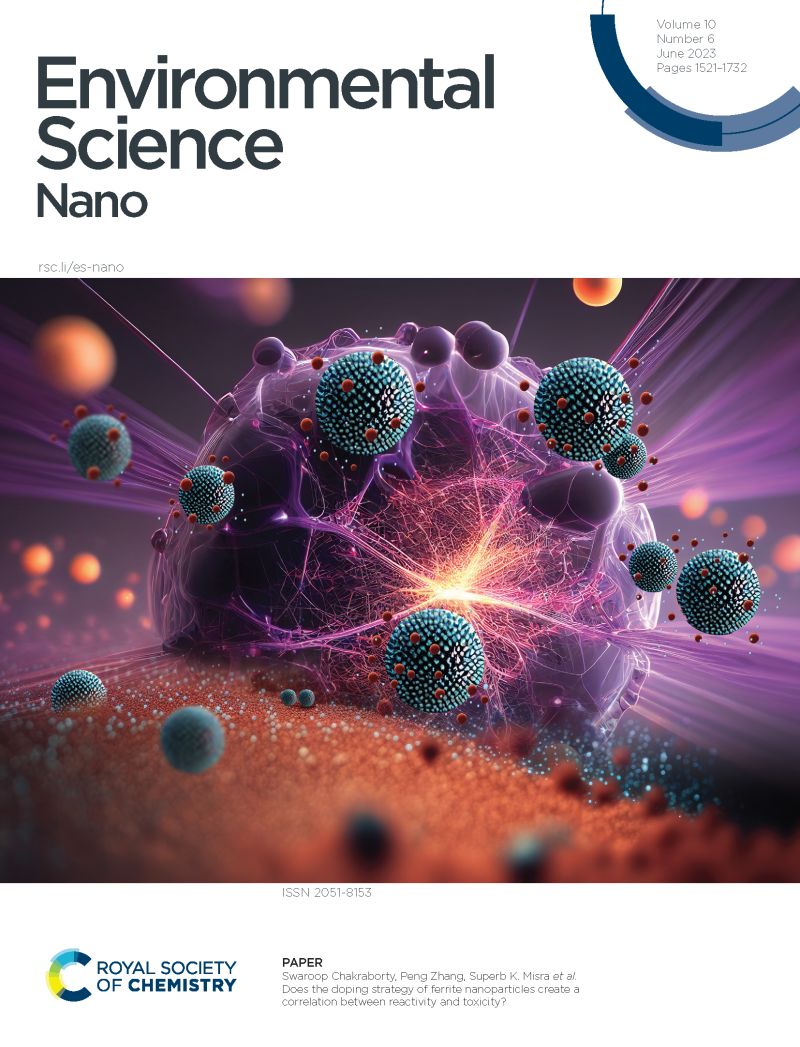SiNPs通过增加生姜根系水分吸收来提高生姜耐涝能力
IF 5.8
2区 环境科学与生态学
Q1 CHEMISTRY, MULTIDISCIPLINARY
引用次数: 0
摘要
涝渍胁迫是全球农业生产力的主要制约因素。虽然二氧化硅纳米颗粒(SiNPs)已被证明可以增强植物对内涝的耐受性,但它们在生姜中的作用机制仍然知之甚少。本研究旨在阐明SiNP200在减轻内涝胁迫中的作用,为利用sinp对抗植物非生物胁迫的不利影响提供基础。结果表明,涝渍胁迫对生姜幼苗的生长、光合作用和植株含水量均有不利影响。SiNP200处理显著提高了植株的净光合速率,降低了叶片细胞的氧化损伤,缓解了植株的衰老和萎蔫。此外,在涝渍胁迫下,施SiNP200可使叶片相对含水量提高9.61%,从而维持了整个植株的渗透平衡,改善了水分状态。此外,SiNP200促进了生姜幼苗根系生长,显著提高了根系水导率(最高达113.46%)。这种改善进一步得到了水通道蛋白基因表达上调的支持,包括ZoPIP1;3, ztip2;2和ZoNIP2;6,这些基因共同促进了水分吸收和组织含水量的提高。涝渍条件下,乙醇脱氢酶(ADH)和乳酸脱氢酶(LDH)等厌氧呼吸酶活性显著升高。经SiNP200处理后,ADH和LDH活性进一步增强,可能会加剧生姜幼苗根系的厌氧呼吸。这种增强可以使根系更好地适应土壤氧含量的急剧减少,从而提高其对涝渍环境的耐受性。因此,本研究将有助于更好地了解SiNP200在缓解涝渍胁迫中的作用,并为植物利用sinp来抵消非生物胁迫的负面影响提供基础。本文章由计算机程序翻译,如有差异,请以英文原文为准。
SiNPs improves the waterlogging tolerance of ginger by increasing water absorption in root system
Waterlogging stress is a major global constraint on agricultural productivity. While silica nanoparticles (SiNPs) have been shown to enhance plant tolerance to waterlogging, their mechanisms of action in ginger remain poorly understood. This study aims to elucidate the role of SiNP200 in mitigating waterlogging stress, providing a foundation for utilizing SiNPs to counteract the detrimental effects of abiotic stress in plants. The results showed that waterlogging stress had adverse effects on the growth, photosynthetic and plant water content of ginger seedlings. SiNP200 treatment significantly increased the net photosynthetic rate, reduced the oxidative damage of leaf cells, and alleviated plant senescence and wilting. Additionally, SiNP200 application can increase leaf relative water content by 9.61% under waterlogging stress, thus maintain osmotic balance and increase water state of the whole plant. Besides, SiNP200 enhanced root growth and significantly increased root hydraulic conductivity (by up to 113.46%) in ginger seedlings. This improvement was further supported by the upregulated expression of aquaporin genes, including ZoPIP1;3, ZoTIP2;2, and ZoNIP2;6, which collectively facilitated water absorption and elevated tissue water content. Under waterlogging conditions, the activities of anaerobic respiratory enzymes, such as alcohol dehydrogenase (ADH) and lactate dehydrogenase (LDH), significantly increased. Following SiNP200 treatment, the activities of ADH and LDH were further enhanced, potentially intensifying the anaerobic respiration in ginger seedling roots. This enhancement may enable the roots to better adapt to the dramatic reduction in soil oxygen levels, thereby improving their tolerance to waterlogged environments. Therefore, this study will help to better understand the role of SiNP200 in alleviating waterlogging stress and provide foundation for the use of SiNPs in plants to offset the negative effects of abiotic stress.
求助全文
通过发布文献求助,成功后即可免费获取论文全文。
去求助
来源期刊

Environmental Science: Nano
CHEMISTRY, MULTIDISCIPLINARY-ENVIRONMENTAL SCIENCES
CiteScore
12.20
自引率
5.50%
发文量
290
审稿时长
2.1 months
期刊介绍:
Environmental Science: Nano serves as a comprehensive and high-impact peer-reviewed source of information on the design and demonstration of engineered nanomaterials for environment-based applications. It also covers the interactions between engineered, natural, and incidental nanomaterials with biological and environmental systems. This scope includes, but is not limited to, the following topic areas:
Novel nanomaterial-based applications for water, air, soil, food, and energy sustainability
Nanomaterial interactions with biological systems and nanotoxicology
Environmental fate, reactivity, and transformations of nanoscale materials
Nanoscale processes in the environment
Sustainable nanotechnology including rational nanomaterial design, life cycle assessment, risk/benefit analysis
 求助内容:
求助内容: 应助结果提醒方式:
应助结果提醒方式:


